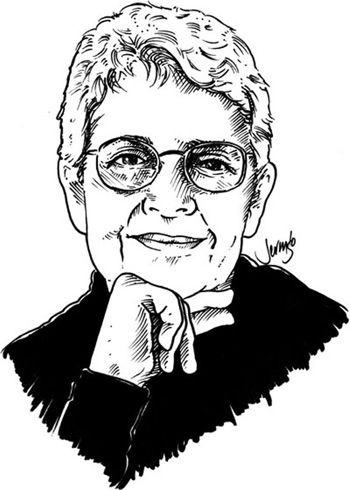

Paola Gianturco Back in Boise for the Fall Symposium
of
the Idaho Women's Charitable Foundation.
Posted October 6, 2010
By George Prentice

Since leaving Boise in the early 1990s, Paola Gianturco she's become a world-class photojournalist, documentarian and author. In March, 2009, UNESCO commissioned Gianturco to create an exhibit for its world headquarters in Paris as part of the organization's International Women's Day event. Gianturco spent 35 years in marketing and corporate communications, and as executive VP of corporate communications for Saatchi & Saatchi, she worked with Boise Cascade and the former Idaho First Bank between 1982 and 1991. But in 1995 she was inspired when she read about women in the global south. She decided she wanted to tell their stories in pictures. She didn't approach a publisher until two years after having traveled to 12 countries in six trips. She's authored four acclaimed photo books since, asking her readers to engage with, learn from and support women around the world. On Thursday Oct. 7, she'll be the guest speaker at the fall symposium for the Idaho Women's Charitable Foundation.
What was your first camera?
Like most people, it was a little Brownie. My father gave it to me when I was 8. He took pictures too--of people's insides. He was a radiologist. It was his decision that I shouldn't shoot with color film until I understood composition, how not to clutter the edges of a photograph, how to hold a camera quietly.
So what kind of camera do you use today?
Always Canon. I take almost all of my photographs with a Canon Rebel XTi. I work in very rough areas, and I don't really want a fancy camera.
You're well known for optimism. Where does it come from?
I'm very optimistic about what I see. I've now documented women's lives in more than 40 countries. The women in every single country have been making progress against terrible odds, especially in my most recent book, Women Who Light the Dark.
Tell us about one of those women.
Zimbabwe has an organization founded by a high school English teacher, Betty Makoni. She organized an afterschool group of young girls. She started the group because the little girls of Zimbabwe were telling her that they were being raped. It turned out that the traditional healers in Zimbabwe were telling men that were HIV positive that they would be cured if they had sex with virgins. A terrible, terrible rumor that was spread like wildfire. So Betty thought that she could begin an after-school club for the little girls. And the girls themselves seized the initiative and mounted a movement against child rape using poetry. In Zimbabwe's Shona culture, poetry is traditionally written and then performed in public meetings. The little girls began writing poems about their experiences, and when they began standing up in public meetings--and these little girls are as young as 6 years old--the communities were mobilized instantly against this terrible practice. I thought it was astonishing.
Is your work dangerous?
I've never been afraid of where I've been. Maybe I should have been. I was in Kathmandu in the spring of 2006 when they were just about to overthrow the king and there was violence everywhere. I was photographing women who were being taught how to drive taxis, and it was quite difficult to photograph because people were literally being shot all around me. Was I afraid? No. I was with people who lived there and knew the area.
I got to Morocco when 10,000 people were rioting because Denmark had just published political cartoons depicting the prophet Mohammed. I wasn't afraid because I didn't think it was about me. But I suppose it is pretty dangerous every once in a while.
Describe a recent photograph that you really enjoyed.
I was in Ireland on something called International Grandmother's Day. And the grandmothers teach their children's children to plant locally and cook traditional food. I was privileged to photograph eight little granddaughters in Dublin with their grandmother. It made my heart sing.
How many frequent flier miles have you racked up?
I totaled more than 1 million in the 35 years when I was in the business world. My husband had another 2 million. That's how I can produce these books for relatively little money. It also allows me to give all my author royalties to organizations that I think are doing effective work in the subject area which the book addresses.